#cultural identity
Text
okay now I'm curious.
context: (white) USAmericans have this tendency to take a DNA test to better understand their cultural heritage. then they make whatever result they got (50% Scots-Irish, 25% German, 12.5% French, as a common example) and say that they "are" those things. this is a common topic of conversation, sometimes people will even say something like "are there any Germans here" and they don't mean people who were born and raised German, they mean people who were told they were German by a DNA test.
now, I see this a bit from an outside perspective (my family is culturally French-American because my mother is a French immigrant), but it seems to me like they take this to a cultural level. I've heard people say things like "my family's Irish so St. Patrick's Day is very special to me" without it seeming like they know anything about the day they are celebrating. it's a cultural identity, but their familial culture is no different from their neighbors with a completely different genetic makeup.
for anyone who wants to participate, here's a poll and please please PLEASE reblog and tell me your deeper feelings about this this is something I feel strongly about for no particular reason. please say where you are from (to your comfort level) and why you chose what option, at least.
I think this is a deeply interesting conversation with many different avenues of thought (immigrants trying to hide otherness with descendents regretting that, what does cultural identity mean if not your blood and how does that intersect with this idea, the general concept of the "great American melting pot"; to name a few)!! I'm even doing a teacher thing and giving you examples PLEAAASE circulate this and tell me your thoughts no matter where in the world you come from
75 notes
·
View notes
Text
I know it's a complicated matter, but there's really something very telling about a painter born into an Armenian family in Crimea, with an Armenian birth name, buried in an Armenian church, being always referred to as a "Russian painter"
Yes he was born in what was then the Russian Empire but why should the identity of the empire be the one prioritised here?
#hovhannes aivazian#ivan aivazovsky#imperialism#cultural identity#thoughts#kandinsky is always a *russian painter* even though he lived in germany and france for considerable portions of his life (Bauhaus anyone?)#art history#discourse
31 notes
·
View notes
Text
Ukrainians are breaking their ties with the Russian language
By Francesca Ebel and Kostiantyn Khudov

KHARKIV, Ukraine — In Kharkiv, a historically Russian-speaking city in eastern Ukraine, just 25 miles from the Russian border, Ukrainian classes are in high demand. Waiters, hairdressers and shopkeepers have stopped using Russian. Ukrainian language books are flying off the shelves, and local publishers are struggling to keep up with orders.
One of Russian President Vladimir Putin’s central — and false — justifications for invading Ukraine, that he was defending Russian-speaking people, has backfired dramatically.
In cities across Ukraine, people started bringing their Russian literature to local recycling stations to be shredded and converted into toilet paper. Street names have been changed to honor Ukrainian heroes instead of Russian writers. Russian dishes, like pelmeni dumplings, have been relabeled on restaurant menus. Radio stations stopped playing songs by Russian artists, long popular in Ukraine.
“For many people, it has become impossible to speak Russian because it is the language of the enemy,” said Iryna Pobidash, an associate professor of linguistics at Kyiv’s Igor Sikorsky Polytechnic Institute. “Russian is now a marker of everything that has happened: a marker of pain and tragedy.”
“Language is not only about communication, but also about positioning oneself. It’s my ‘who am I?’” Pobidash added.
Ukrainian author Andrey Kurkov, who writes novels only in Russian, said that after the invasion, he felt “in pain” when writing because he was so ashamed of Russia.“I understood that Russia was destroying itself and destroying Russian language culture worldwide,” he said.
READ MORE
#language#literacy#linguistic imperialism#ukrainian literature#russian literature#russia invasion#librarians#cultural identity#writing community
56 notes
·
View notes
Text
Joy Ride brings subtle wisdom to an otherwise bawdy comedy. Audrey’s core need is for belonging and acceptance. Instead of having her find it abroad, the film directs her to look to her friends who stood up for her on the playground or buoyed her through college. The idea of a pilgrimage leading you back to the loved ones who have been there all along is also a common plotline in a girl’s- or guy’s-trip narrative. But given Joy Ride’s cultural context, it is a clever undoing of the motherland trope. Audrey’s friends are her redemption because they’re part of the same complicated diaspora and know what it’s like to struggle to belong in specific ways.
—Nina Li Coomes on how Joy Ride subverts the motherland trope
#entertainment#movies#joy ride#race in america#asian diaspora#comedy#motherland#the motherland trope#cultural identity
58 notes
·
View notes
Text
A little rant about the term AF/MAB being used in place of perisex AF/MAB and ignoring intersex people's complex identities because they are intersex.
Cw: intersexism and mention of sexual anatomy (genitals)
People need to stop using afab/amab when talking about trans issues or cultural identities!! You erase intersex people with it, you think amab = perisex males and afab = perisex females. You all seem to forget even when your intersex afab/amab should be avoided!! You can use it on YOURSELF, but to say oh transfems are 'amab' who are traditioning to a more feminine identity, just erasing so many intersex people. I was IAFAB (intersex assumed female at birth), yet I was raised in a mostly masculine way / I was raised closer to a boy than a girl. Does that mean I suddenly can't claim to be transfem or claim my cultural identities related to being transfem because historically, people assumed it was always perisex AMAB raised male who later transitioned? No, im still going to claim them because its between me, my culture, and the fact its MY identity, which is going to be complex. Being intersex is complex and affects my gender in almost every way. So simply watering down being trans to your biological sex is again really fuckin weird.
Instead of using AMAB/AFAB, please just find alternatives like non perisex [term here] instead of just assigned blank at birth. I see even other intersex people do this and while it's 'historically accurate,' it again erases our people and our struggles with gender. Just like TME/A was created with perisex people in mind so was the whole Internet suddenly deciding A[term]AB = perisex. You can look at afab tags and tell its about PERISEX females and almost always completely ignores the fact intersex people can be afab and not have a uterus or ovaries or some afab intersex people have penises, testicles, or a mix of both. (I use AFAB because it's just a more popular tag and we were assumed female at birth.)
#☁️🌹 . . Heavenlys Yap Session#cw intersexism#cw genitalia#intersex#transfem#transgender#mogai#intersexism#intersex issues#tme/tma#cultural identity#mogai safe#transneutral#intersex transfem#lgbtqia
14 notes
·
View notes
Text
some thoughts about cultural appropriation
a few important notes before you read this:
- here, when i say “white,” i am referring to specifically white canadian, white american, and white european, with white european being a rather loosely defined term but typically relating to britain. this is not intended to ignore the existence other white identities such as white south africans, but i am a mixed-race indian+white person who has spent most of his life in the united states and does not have enough experience or knowledge of these identities to make accurate takes about them.
- this is not me making excuses for cultural appropriation. it is a dangerous thing that waters down and erases culture, and should not be encouraged.
- this is written in a gentle and hopefully palatable way to white audiences, who i encourage to read this. not every take from a poc is going to be nice-nice about these kinds of things, but this is.
i find it very interesting that when you ask white folks about why they’re so obsessed with certain aspects of culture, the palatable, easily-appropriated ones like native headdresses and whatnot, their reason usually is in the form of “mysticism” and “exoticism.” this is a problem in itself, obviously, tying into the long-standing colonial fetishization of culture, but here’s the bit i actually want to talk about:
when you ask why it’s so “exotic” to them, why it’s so obviously “different and other” at a personal level - it comes from a sense of community.
let me break this down a bit. culture and community are often used as very loose synonyms, and for pretty good reason. a culture is based around the ideas of societal norms and roles, material things, ways of thinking and whatnot - and these all come down to community.
there are certain things that are intrinsic and unique to every culture (even if they are a medley of various different cultural influences), whether they be classical carnatic music in south india, pinakbet from the ilocos region of the philippines, or the ninauh-oskitsi-pahpyaki social role/gender in the blackfoot tribe. even cultures we would consider to “appear” white have these, such as the tales of tuatha de dannan in irish mythology. but the idea of whiteness as a concept does not have these.
whiteness as a concept is a sterilized, “de-cultured” identity that attempts to assimilate most/many folks who appear “white” into a single monolith. this is obviously very damaging and dangerous to many cultures - for example, many ancient celtic traditions have been lost due to the deliberate erasure of these in order to assimilate these people into whiteness.
whiteness as an identity was founded on a basis of eurocentric values and traditions as well as either the deliberate assimilation or erasure of all other cultures and traditions - white supremacy. it still exists like that today (see groups like the KKK or proud boys).
now we know obviously that not all white folks are intentionally racist and a large portion of them genuinely don’t mean harm to poc communities…so why is cultural appropriation so rampant, even in white folks who would otherwise be decent allies to poc?
again, it’s coming down to a sense of community.
i have grown up and lived in the united states for most of my life, and as early as i can remember i have always had questions about the cultural identities of white americans. i’d look at the indian half of me and indian culture that i partook in and experienced, things i cherish such as cooking traditional South indian food, learning carnatic classical music, participating in religious ceremonies, etc. and then i’d look at the white half of me. there was no culture there i could find.
sure, i could look at typically “american” things, such as hamburgers and surfboarding and apple pie, but these fall apart very easily with minimal research. similar hamburger-looking foods appear in europe as far back as the 4th century. bodysurfing/surfboarding has existed in peru, africa and various polynesian countries for thousands of years. versions of apple pie existed in british and french cookbooks as far back as 1390 BCE with influences from the ottoman empire - and apples aren’t native to the americas.
the colonization of the americas and the subsequent reframing of canada and the states as “white” areas is due to the influence of colonization, obviously - and the genocide of millions of first nations people. this was deliberate.
but here is the interesting bit. for hundreds of years, as far back as the pilgrims, cultures that were not fully assimilated into whiteness were rejected and oppressed - even as they colonized.
take italian-americans, for instance. the late 1800s to early 1900s saw a huge influx of italian immigrants to the united states. these immigrants faced oppression in the form of religious and political discrimination (anti-catholic sentiments and anti-communist sentiments). they were often subject to horrible living conditions compared to their american white counterparts as well as violence - one of the largest lynchings in america was the mass-lynching of eleven italian immigrants in new orleans in 1891.
yet today, when we think of italian-americans, we often see them simply as “white.”
a huge amount of immigrants to the united states and canada were forced to give up their original cultures in order to assimilate into whiteness. if not, they were subject to prejudice, discrimination and overall just shitty conditions. for some groups that resembled “white americans” in appearance, such as irish folks and italian folks, this method worked eventually and they were assimilated and accepted into whiteness. for many others due to their skin color or features, such as black enslaved folks or jewish folks, even giving up their own culture still meant they were not accepted as white - they didn’t “look white.” additionally, many cultural groups resisted assimilation and rejected being seen as white.
this is somewhat why i believe so many white americans, canadians, and british participate so heavily in cultural appropriation. it comes from a sense of loneliness, of little to no original culture - and whatever is left has been bastardized and reduced to just “white,” neglecting the cultural nuance.
growing up as a brown-skinned mixed person with heavy ties to the indian side of my culture, i was subject to a fair amount of racism. i remember people asking why my hair was “oily and gross,” and then begging my mom to never put coconut oil in my hair ever again. i remember people telling me that the khichdi my mom had carefully made for my lunch “looked and smelled like fish eggs,” and then only eating bland sandwiches at school. but there is one experience i remember very clearly.
i had a white american best friend when i was very young, from kindergarten to third grade. she never judged me for my food or my clothes or my grandparents’ accent or any other part of my culture and i loved her for it. but i remember having this experience with her one day.
she’d met my grandmother who came to pick me up, donned in an elaborately-formed red sari. the next day, when i sat with her at recess, she said something like, “i liked your grandma’s dress. it was pretty.” taken aback by open appreciation of my culture, i just mumbled a pleased “oh, thanks.” but she didn’t stop there. she said, “my grandma only wears boring clothes, like sweaters and granny dresses. i wish i was indian.”
i said something like, “granny dresses can be nice. you can be white and wear cool clothes.”
“yeah, i know. but any old person can wear sweaters and dresses. they’re just…not from anywhere.”
at the time, i didn’t fully understand her desire to be connected to a specific culture, but i understood in a bit of a detached way. i was always very connected to and appreciative of my indian culture, but look to the white side and i was met with exactly that - a gaping white void. the closest answer i got was “well, your great-grandparents came from germany.” that answer dissatisfied me, although i couldn’t articulate why. now i can.
it’s something like, “but after such a long time, they’re not really german anymore.” i’d seen the absence of culture in whiteness, and how my white friends and family could name a distant time where their family belonged to another culture - but not anymore. now, they were just “white.”
whiteness as a concept strips and sanitizes culture to fit a very, very narrow version of culture - a culture defined on the surface by cheeseburgers and british accents and football and canadian politeness, but dig deeper and you find colonialism, colonization, eurocentricism, racism, and various other systems of oppression.
once again, this is not an excuse for white folks who appropriate culture nor is this me trying to reason my way into approving of it. it’s not, and i’m not. i die a little bit inside every time i see some random hippie on the internet bastardize and water down the concept of chakras. but it is a bit of an explanation, and this is why i have some degree of sympathy for white folks who culturally appropriate.
so, to all white or white-passing folks who read this and understand/relate to it: i implore you this. please, please, please, if you have the time and resources to do so, reconnect with your native culture. talk to older irish folks, or learn about traditional welsh folklore. learn german, or watch documentaries of italian culture. read stories from white-passing native folk, or talk with your black grandparents. please do not lose the culture that your ancestors had to give up in order to assimilate into whiteness. understand that whiteness is a part of you and that it impacts those around you, but if you can, please make the effort to reconnect with your culture. it does wonders for your identity and sense of self.
#emo moss talks#emo moss writes#culture#cultural appropriation#poc#whiteness#racism#xenophobia#cultural anthropology#cultural identity#cultural appreciation#lynching tw#racism tw#lynching#racial disparities#eurocentrism#colonialism#colonization#white guilt#racial violence tw#discrimination#discrimination tw#genocide#genocide tw#kkk#kkk mention
39 notes
·
View notes
Text
Meshulav (משלב)

Meshulav: a Jewish, culturally exclusive gender or term for Jews who experience multiple gender experiences at once. This can mean being multigender, having a gender that is multi-aligned, has multiple quality traits, or multiple social gender roles. Meshulav is not fluid. Eshed is the Jewish gender term for genders that are fluid.
The closest non-Jewish genders that would resemble Meshulav are bigender, multigender, pangender, cenngender, and many more.
Genders and gender roles in Jewish religion are completely different from Western cultures. Genders can be divided differently depending on denomination, too. For example: While all genders are considered equal - Zachar (male), Nekevah (female), Androgynos (ambiguous), and others - Orthodox Jews consider Nekevah to be separate, but equal, to Zachar, which is different from Conservative, Reform and secular Judaism. Nekevah perform roles that Zachar can't, by Orthodox belief. Androgynos tend to be treated as capable of, or transitional between, both.
Meshulav was coined by Tirednowhasablog in June of 2021. The Meshulav flag was made by miraheze user Bigender on March 14th, 2022.
131 notes
·
View notes
Text
Finally an update on my newsletter, a narrative essay on cultural identity and the lack thereof. Inspired by the memoir "Crying in H Mart".
Please give me a read and share.
https://wiltedgarden.substack.com/p/she-is-an-uncharted-island

8 notes
·
View notes
Text
The Circassian superwoman: ✨Lashin✨


In our folklore we have a story of a woman named Lashin who had extraordinary strength that she defeated the mongol’s strongest wrestler.
The Mongol army who around that time swept through the north Caucasus challenged the Circassians to bring in their strongest wrestler to fight their wrestler Qaisin.
The Circassian chose a woman named Lashin and dressed her up in men’s clothing to disguise her. Lashin was able to pick up Qaisin, defeated him and emerged victorious. It was said the reason why they chose her is that her father in law once witnessed Lashin pick up a big cow in anger and managed to throw that cow several distances away.
The Circassians later revealed her identity and this time requested another duel without her disguise. Out of fear the Mongols declined and retreated from Circassia.
It was said the duel took place near the chegum river known as Lashinqey named after her.
The story does have different versions with minor differences.
#circassian#folklore#culture#Caucasus#adyghe#Abkhazian#female icons#history#classical mythology#West Asia#eastern europe#Lashin#female figure#warrior#wrestler#cultural identity#folk culture#Female wrestler#female fighter#women in history#womenempowerment#women#kavkaz
15 notes
·
View notes
Text
The Complexities and Dynamics of Arranged Marriage: A Modern Perspective
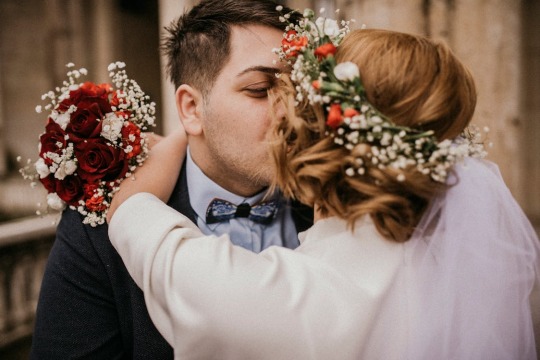
Arranged marriage, a tradition deeply rooted in various cultures around the world, has long been a subject of fascination, curiosity, and sometimes even controversy. While the concept might seem archaic to some, arranged marriages continue to thrive in many societies, albeit often evolving to accommodate modern sensibilities. In this essay, we delve into the complexities and dynamics of arranged marriage, exploring its historical significance, cultural variations, societal impacts, and the evolving attitudes towards this age-old institution.
Understanding Arranged Marriage
Arranged marriage, as the name suggests, is a union orchestrated by families or intermediaries, where the individuals involved often have little to no say in choosing their life partners. Unlike love marriages, where individuals typically meet, court, and decide to marry based on mutual affection, arranged marriages are founded on familial considerations, such as social status, financial stability, cultural compatibility, and familial alliances.
Historical Context
The practice of arranged marriage can be traced back thousands of years, with its origins deeply embedded in cultural, religious, and socioeconomic norms. In many ancient civilizations, marriages were strategic alliances between families, aimed at consolidating power, acquiring wealth, or preserving lineage. The concept endured through the centuries, adapting to changing social structures and norms.
Cultural Variations
Arranged marriage manifests in diverse forms across different cultures, each with its own rituals, traditions, and expectations. In some societies, such as India, Japan, and parts of the Middle East, arranged marriages are still prevalent, with families playing a central role in matchmaking. Conversely, in Western cultures, where individual autonomy is highly valued, arranged marriages are less common, though they do exist within certain immigrant communities.
The Role of Family and Community
Central to the institution of arranged marriage is the involvement of families and sometimes entire communities in the matchmaking process. Parents, relatives, and trusted intermediaries often take on the responsibility of finding suitable matches based on criteria deemed important for marital success. This involvement underscores the collective nature of marriage, where familial interests often supersede individual desires.
Navigating Tradition and Modernity
In recent decades, the dynamics of arranged marriage have undergone significant transformations, influenced by globalization, urbanization, and changing societal norms. While traditional arranged marriages were strictly arranged by parents without the consent of the individuals involved, contemporary arrangements often involve greater agency for the prospective partners. Many modern arranged marriages incorporate elements of compatibility testing, courtship, and mutual consent, blurring the lines between arranged and love marriages.
Challenges and Controversies
Despite its prevalence and adaptation to modernity, arranged marriage is not without its challenges and controversies. Critics argue that the practice can perpetuate gender inequality, restrict individual freedom, and lead to marital dissatisfaction and even abuse. Additionally, the pressure to conform to familial expectations and cultural norms can create immense stress for those involved, particularly for individuals who do not wish to participate in arranged marriages.
Gender Dynamics
Gender dynamics play a significant role in arranged marriages, with traditional notions of masculinity and femininity often shaping marital expectations and responsibilities. In many cultures, women are expected to prioritize familial harmony and obedience over personal autonomy, while men are tasked with providing for and protecting their families. These gendered expectations can influence the power dynamics within arranged marriages and contribute to inequalities.
Shifting Perspectives
Despite its challenges, arranged marriage continues to endure, albeit in evolving forms. In some cases, arranged marriages are celebrated for fostering stability, commitment, and familial bonds. Proponents argue that the involvement of families can provide valuable support and guidance, setting the foundation for successful partnerships. Moreover, arranged marriages are often viewed as a means of preserving cultural traditions and heritage in an increasingly globalized world.
Marriage Arrangement Aamboku
Conclusion
Arranged marriage, with its rich history and cultural significance, remains a complex and multifaceted institution. While traditional practices persist in many parts of the world, arranged marriages are also evolving to accommodate modern sensibilities and individual autonomy. As societies continue to grapple with questions of tradition, modernity, and individual rights, the institution of arranged marriage will likely remain a subject of fascination, debate, and adaptation. Ultimately, whether arranged marriage is perceived as a binding tradition or an outdated practice depends on one's cultural perspective and personal experiences.
#arranged marriage#omiai#nakodo#marriage in Japan#Japanese culture#Japanese traditions#Heian period#Edo period#Meiji Restoration#gender roles#matchmaking#cultural identity#cultural continuity#traditional values#modern values#parental involvement#marriage evolution#marriage attitudes#marriage future#marriage trends
3 notes
·
View notes
Text


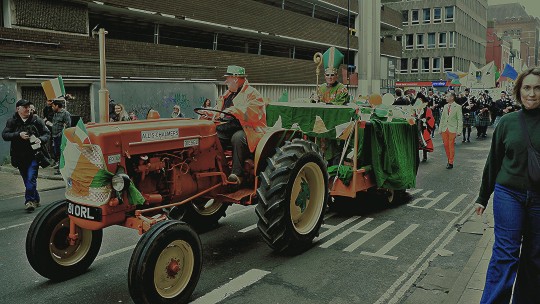


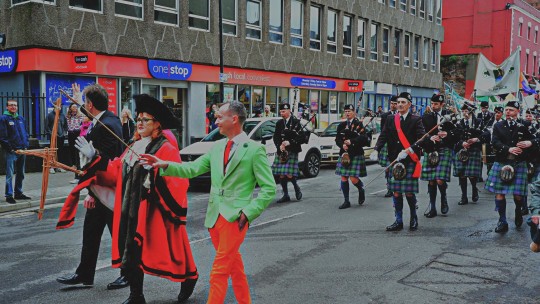
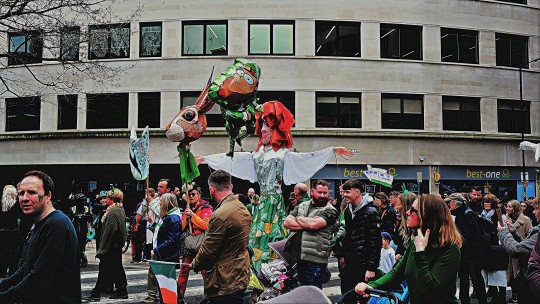
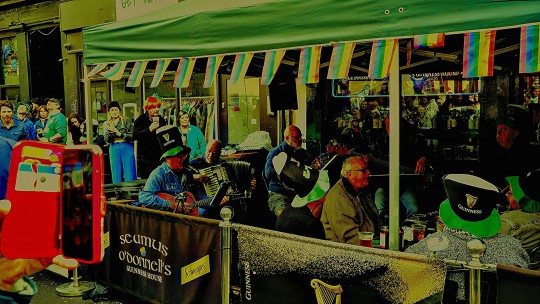

A collection of photos from the St Patrick's Day parade in Bristol on Sunday 17th of March. For a celebration of traditional Irish culture, it was quite modern and flamboyant, and not without its references to more progressive political agendas (though I've heard of worse), it was wonderful to see how many people come together to enjoy and appreciate a culture that, inasmuch as it has spread across the globe, remains of distinct localised origin.
This is why I am a photographer, to explore in visuals culture in all its various forms, the good, the bad, and the ugly, exploring what makes communities tick, what brings people together, and what pulls them apart. It is local culture that brings communities together, forging links between people and the places the live in, no matter their origin or background, and if we want local and national cultures to continue playing that role, then we must do everything to preserve their identity and uniqueness through all the cultural convolutions of an increasingly globalised world.
#St Patrick's Day#Bristol#parade#shamrock#bishop#Traditionalist#culture#politics#community#photography#city life#localism#Irish culture#Irish traditional music#celebration#heritage#local culture#popular culture#folk culture#folk music#Irish folk music#national culture#cultural identity#culture photography#Christianity#Christian heritage
2 notes
·
View notes
Text
Did you know that the indigenous Biafran people face a grave threat to their cultural identity? As promoters of the Biafra referendum, we at RisingSun Charities Organization aim to help people explore the impact of ethnic cleansing on the Biafran culture, shedding light on their challenges.
2 notes
·
View notes
Text
‘Our mission is crucial’: meet the warrior librarians of Ukraine
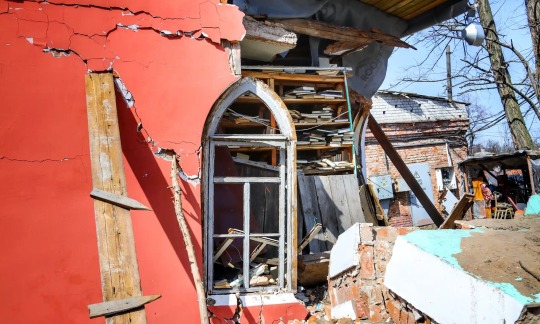
When Russia invaded Ukraine, a key part of its strategy was to destroy historic libraries in order to eradicate the Ukrainians’ sense of identity. But Putin hadn’t counted on the unbreakable spirit of the country’s librarians
by Stephen Marche
The morning that Russian bombs started falling on Kyiv, Oksana Bruy woke up worried about her laptop. Bruy is president of the Ukrainian Library Association and, the night before, she hadn’t quite finished a presentation on the new plans for the Kyiv Polytechnic Library, so she had left her computer open at work. That morning, the street outside her house filled with the gunfire of Ukrainian militias executing Russian agents. Missile strikes drove her into an underground car park with her daughter, Anna, and her cat, Tom. A few days, later she crept back into the huge empty library, 15,000sqft once filled with the quiet murmurings of readers. As she grabbed her laptop, the air raid siren sounded and she rushed to her car.
Thanks to that computer, Bruy could work. She didn’t return to her office; instead, she fled west to Lviv. “In all that time, from the first day of the full-scale war, I did not stop working,” she says. The library’s IT specialist lived in the neighbourhood. He kept the servers running and the employees connected. “So there was not a single day’s break in the work of the Kyiv Polytechnical Library, all this time, from 24 February.” The Russians have not shut her down. Oksana Bruy is winning her battle in the Ukrainian war. The libraries are open.
READ MORE
#libraries#librarians#literacy#cultural identity#Ukraine#Ukrainian Library Association#american library association
216 notes
·
View notes
Text
A Tale of Resistance: Malcolm X and the Wounded Knee Massacre

Introduction:
In the annals of American history, two significant events stand as symbols of resistance and the struggle for justice: the activism of Malcolm X and the Wounded Knee Massacre. Though seemingly unrelated, these events are intertwined through the shared themes of indigenous rights, racial injustice, and the fight against systemic oppression. In this blog post, we delve into the relationship between Malcolm X and the Wounded Knee Massacre, exploring how their stories intersect and shed light on the ongoing struggle for equality and liberation.
Malcolm X: Championing Civil Rights and Empowerment:
Malcolm X, an influential civil rights leader, advocated for the rights and empowerment of African Americans in the United States. He staunchly opposed racial segregation, challenged white supremacy, and called for black liberation. His powerful speeches and unwavering commitment to social justice inspired a generation to resist oppression and fight for their rights.
Indigenous Rights and the Plight of Native Americans:
Parallel to the civil rights movement, Native Americans were also engaged in their own struggle for justice and self-determination. Native American communities faced centuries of displacement, forced assimilation, and broken treaties. The Wounded Knee Massacre of 1890 stands as a tragic symbol of the violence and oppression inflicted upon Native Americans by the U.S. government.
Common Ground: The Fight Against Systemic Oppression:
Despite their different backgrounds, Malcolm X and Native American activists shared a common understanding of systemic oppression and the need for collective resistance. Both movements sought to challenge oppressive systems and secure justice for their respective communities. Malcolm X's teachings on self-determination and the fight against institutionalized racism resonated with Native American activists who sought to reclaim their cultural identity and sovereignty.
Intersectionality and Solidarity:
The relationship between Malcolm X and the Wounded Knee Massacre extends beyond shared struggles; it highlights the importance of intersectionality and solidarity in the fight against oppression. By recognizing the interconnectedness of various struggles, activists can forge alliances, build bridges, and amplify their collective voices. Malcolm X's emphasis on unity and the power of alliances resonated with Native American activists, leading to a convergence of their efforts during the civil rights era.
Legacy and Lessons Learned:
Both Malcolm X and the Wounded Knee Massacre left a lasting impact on the fight for justice and equality. Malcolm X's legacy continues to inspire activists around the world, reminding them to challenge systems of oppression and demand liberation. The Wounded Knee Massacre serves as a stark reminder of the ongoing struggle for indigenous rights and the need to address historical injustices.
Conclusion:
The relationship between Malcolm X and the Wounded Knee Massacre unveils the interconnectedness of struggles for justice and the need for solidarity among marginalized communities. These historical events remind us that the fight against systemic oppression transcends boundaries and demands collective action. By exploring the shared themes of indigenous rights, racial justice, and resistance, we honor the legacies of both Malcolm X and the Wounded Knee Massacre. As we strive for a more just and equitable society, let us draw strength from these stories of resilience and continue the work of dismantling oppressive systems that affect us all.
#Malcolm X#Wounded Knee Massacre#Resistance#Activism#Civil Rights#Indigenous Rights#Racial Injustice#systemic oppression#Equality#Liberation#Empowerment#Self-determination#intersectionality#solidarity#Historical Injustices#Marginalized Communities#cultural identity#sovereignty#collective action#legacy#Social Justice#hip hop#black culture#hiphop fashion#hip hop style#streetwear#hip hop fashion#social issues#discrimination#human rights
9 notes
·
View notes
Text
A Fresh Perspective on the Mafia Genre: A Review of "Eastern Promises"
David Cronenberg’s “Eastern Promises” (2007) marks a riveting departure from the traditional mafia narrative, offering a deep dive into the murky waters of London’s Russian mafia with an intensity that only Cronenberg could deliver. Starring Viggo Mortensen as Nikolai Luzhin, a character of enigmatic loyalties and hidden depths, the film explores themes of identity, loyalty, and redemption…

View On WordPress
#Award-Winning Film.#body horror#Cinematic Craft#Cinematography#Crime and Redemption#crime thriller#Cross-Cultural Dynamics#Cultural Identity#David Cronenberg#Eastern Promises#Family Dynamics#film critique#Howard Shore#Intimate Thriller#London#Mafia Drama#movie review#Naomi Watts#Organized Crime#Oscar-Nominated Performance#Peter Suschitzky#Roger Ebert Philosophy#Russian Mafia#Thriller Genre#Undercover Operations#Viggo Mortensen#Vincent Cassel
2 notes
·
View notes
Text
Headscarves: Embracing Tradition with Style
Exploring the Versatility and Elegance of Headscarves
Headscarves have transcended cultural and religious boundaries to become a symbol of modesty, tradition, and style. From Muslims to Christians and Jews, many people embrace the beauty and elegance of headscarves as a versatile accessory that adds flair to any outfit. Here’s why headscarves are cool and how you can wear them with…

View On WordPress
#Cultural Identity#Diversity#empowerment#fashion accessories#headscarves#Individuality#modest fashion#Self-expression
1 note
·
View note